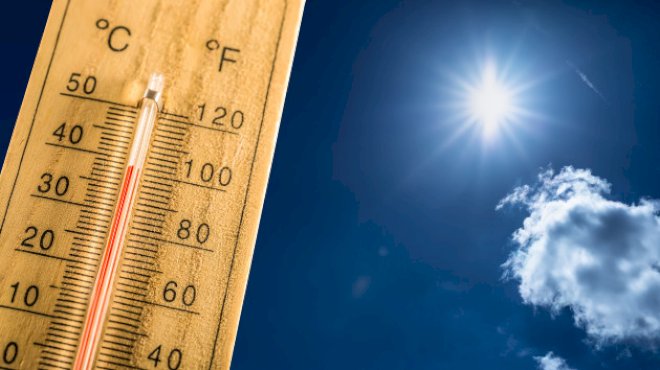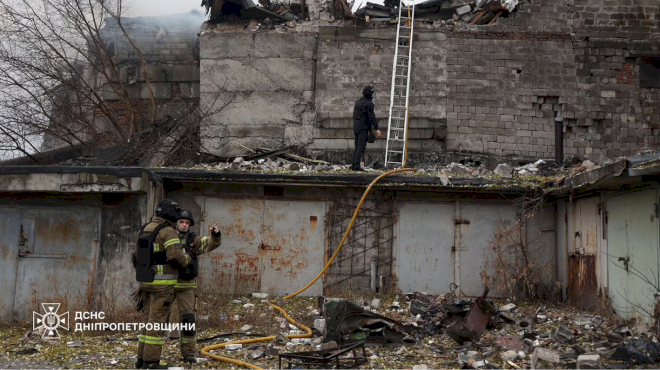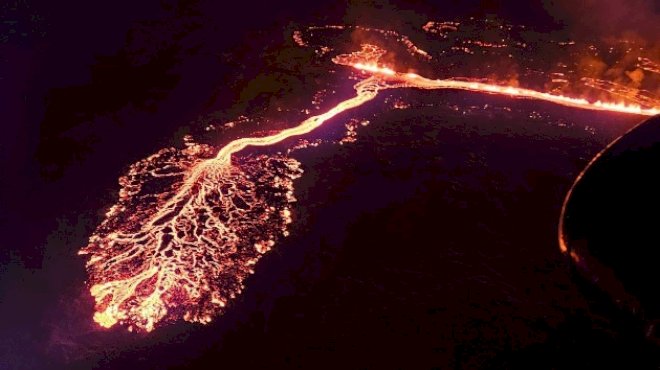
Amanda & Carl Robertello with Son Graham highlight EB Awareness Week for Rare Skin Disorder
October 30, 2024
Vinny Chiffy of Parkway Drugs explains How Pharmacy Benefit Managers are Causing Local Drug Stores to Close
October 31, 2024Climate and environment updates: How to compost your pumpkin after Halloween

Climate and environment updates: How to compost your pumpkin after Halloween
(NEW YORK) — The climate crisis is not a distant threat; it’s happening right now and affecting what matters most to us. Hurricanes intensified by a warming planet and drought-fueled wildfires are destroying our communities. Rising seas and flooding are swallowing our homes. And record-breaking heatwaves are reshaping our way of life.
The good news is we know how to turn the tide and avoid the worst possible outcomes. However, understanding what needs to be done can be confusing due to a constant stream of climate updates, scientific findings, and critical decisions that are shaping our future.
That’s why the ABC News Climate and Weather Unit is cutting through the noise by curating what you need to know to keep the people and places you care about safe. We are dedicated to providing clarity amid the chaos, giving you the facts and insights necessary to navigate the climate realities of today — and tomorrow.
Compost your pumpkin and do a gourd thing for the planet
From carving jack-o-lanterns to baking pies, pumpkins are a staple of fall festivities and Halloween. According to the USDA, American farmers produced more than 1.6 billion pounds of pumpkins last year.
But what happens to all those pumpkins after the trick-or-treating and hayrides are done? The ones that aren’t turned into food end up at a local landfill and decompose into methane, a potent greenhouse gas that is contributing to climate change.
In the U.S., food is the most common material sent to landfills, making up 24% of municipal solid waste. The EPA estimates that food waste, including pumpkins, is responsible for 58% of fugitive methane emissions from municipal solid waste landfills.
There are alternatives, however, to throwing out your pumpkins and other organic decorations like hay, cornstalks and leaves. But before you get started, make sure these materials are free of paint, coating and any nonorganic compounds. Those should be discarded in the trash.
Composting is an excellent option if your pumpkin doesn’t have any of those alterations. This can be done in your backyard or at a local community-based composting program. Just make sure you remove the seeds or your compost could turn into a pumpkin patch. To speed up the composting process, you can break your pumpkin into little pieces before spreading it into your garden. Unlike landfills that trap waste, bacteria in your backyard release very little methane when they break down organic material.
If you don’t want to compost it at home, look for local events and nonprofits, like Pumpkins for the People, that collect used pumpkins for farms and community composting. Some zoos and local farms also accept pumpkins and use them to feed their animals.
Besides composting, you can also chop up your pumpkin and leave it out for local wildlife to enjoy. The Nature Conservancy says that many animals, from squirrels to porcupines, enjoy feasting on this fall treat. But you should ask for permission before leaving it at a park or a managed open space like a state or national park, as some discourage this practice.
You could turn your pumpkin into a temporary bird feeder and leave the pumpkin seeds for birds completing their migration journey. You can also plant the pumpkin seeds. According to the National Wildlife Federation, the blooming flowers of the pumpkin plant provide a great source of nectar for certain bee species and insects.
-ABC News meteorologist Dan Peck and ABC News Climate Unit’s Matthew Glasser
What caused the extreme flooding in Spain that killed more than 90 people?
The weather phenomenon responsible for the extreme rainfall and flooding in Valencia, Spain, isn’t rare or even uncommon. It was also well forecasted in the days leading up to the storm.
The Mediterranean region, including parts of eastern Spain, is frequently affected by heavy rainfall and significant flash flooding events. This recent disaster saw a year’s worth of rainfall in just eight hours. In September 2019, the same region saw 12 to 18 inches of rain in 48 hours.
What’s responsible for these events is a weather system known as a cut-off low. This happens when a low-pressure area is separated from the primary airflow.
Cut-off lows are common and can happen at any time of the year, anywhere in the world. When there is an extended stretch of cloudy, damp, and dreary weather, this is often related to a cut-off low.
However, the slow-moving nature of a cut-off low can set the stage for devastating extreme rainfall events when it interacts with other favorable factors, like the warm waters of the Mediterranean Sea and nearby mountains. Because it is slow-moving, it can quickly pound areas with relentless rounds of heavy rain, resulting in significant flooding.
In Spain, these weather events are often called a “gota fría,” which translates to “cold drop.” But that term doesn’t tell the whole story. What happened in Valencia wasn’t caused by a sudden cold blast sweeping across the region but by the unique characteristics of a cut-off low.
That’s not to say that cold air in the atmosphere doesn’t play a role in enhancing the precipitation. It does bring more frequent rounds of heavy rain. As the system pushes the colder air over the very warm waters of the Mediterranean Sea, it helps trigger and enhance areas of heavy rain.
Because the low-pressure system moves very slowly, it keeps sending waves of heavy rain over the same areas for an extended period, bringing extreme rainfall totals and catastrophic flash flooding.
The nearby mountains also likely enhanced the precipitation and impacts. Plus, the infrastructure in the Valencia region, like many municipalities, isn’t built to handle this amount of rainfall. Add in all of those factors, and you get catastrophic flash flooding.
What role, if any, does climate change play in these extreme weather events?
Climate attribution science will look at how much worse the rain was because of human-caused emissions, but we know that human-amplified climate change is supercharging the water cycle, bringing heavier rainfall and related flood risks. More intense extreme rainfall events increase the frequency and scale of flash flooding as the influx of water is more than the infrastructure of many municipalities was built to handle.
According to the U.S. Government’s Fifth National Climate Assessment, human-amplified climate change is contributing to increases in the frequency and intensity of the heaviest precipitation events. So, in a way, we are all making it rain more.
-ABC News meteorologist Dan Peck and ABC News Climate Unit’s Matthew Glasser
Reducing food waste is good for your budget and the planet
We waste a lot of food. According to the U.N., over a billion tons of it are wasted each year globally, most of it from households. Not only does wasting all this food cost the average American family $1,200 a year, but it’s a significant source of greenhouse gas emissions.
The EPA says food waste in the U.S. is equivalent to the greenhouse gas emissions of more than 50 million passenger cars and is responsible for 58% of methane emissions from municipal landfills.
Methane is a particularly potent greenhouse gas because it traps more heat in the atmosphere than carbon dioxide. The U.N. Environment Programme says methane is “responsible for more than 35 percent of the global warming we are experiencing today.”
How does our food waste become methane?
Landfills act like big diaper linings on the ground, so nothing we throw away decomposes into the soil. There’s a barrier preventing it. Our food waste gets sandwiched between all the plastic, metal and non-organic trash, and without oxygen, it mummifies and releases methane. So, every time we throw away leftover food, we create methane and speed up climate change.
There are, however, ways to curb food waste at home. Composting can turn leftovers into fertilizer for your plants and homegrown produce. If you don’t have a garden, you can use a product like the Mill Kitchen Bin to turn your food waste into clean, dry grounds that don’t smell. Those grounds can then be used as part of the composting process at home or given to a local community garden or farm.
The Too Good To Go app is another way of keeping food out of landfills. The service allows people to purchase surprise bags of surplus food from nearby restaurants, bakeries and grocery stores, preventing perfectly edible items from being thrown away. The bags, priced between $5 and $10, are packed with various items that are still good to eat but would have been thrown away.
Understanding food labels can also significantly reduce your waste. The often confusing terms “use by,” “best by,” and “expiration dates” sound similar but mean different things.
A “use by date” is the last date recommended for eating a product while it’s still at its peak quality. After this date, the food might still be safe, but the quality may decline. For perishable items like dairy or meats, it’s often best to follow this date closely, but use your nose and eyes to help determine whether it’s still good.
“Best by” or “best before” dates are about the product’s quality, not safety. It indicates when the food will be at its best flavor or texture. After this date, the food is usually still safe to eat, but it might not taste as good or have the same texture. Often, you won’t even notice a difference.
“Expiration dates” are dates found on products where safety is a concern, like baby formula or certain medications. After this date, the product should not be consumed, as it may not be safe or effective.
-ABC News Chief Climate Correspondent Ginger Zee and ABC News Climate Unit’s Matthew Glasser
Greenhouse gas concentrations reach new record high in 2023
Our planet is facing another unfortunate climate milestone.
According to a new report from the World Meteorological Organization (WMO), carbon dioxide concentrations have increased by more than 11% in just two decades, making 2023 a record for the amount of the greenhouse gas currently in our atmosphere.
The WMO says CO2 is now building up in the atmosphere faster than at any time in human existence. They say massive vegetation fires, which emit greenhouse gases, and El Niño, which can reduce our forests’ ability to absorb CO2 due to drought, contributed to the recent surge. However, the U.N. agency also points out, “The reason behind this decade-long significant increase in CO2 is historically large fossil fuel CO2 emissions in the 2010s and 2020s.”
The WMO began reporting on greenhouse gas emissions in 2006. That year, they found that atmospheric CO2 levels for 2004 were at 377.1 parts per million. Last year, they were recorded at 420 parts per million. That puts CO2 concentrations at 151% above the preindustrial era.
Methane, one of the worst greenhouse gases in terms of global warming, also reached a record level for atmospheric concentrations. It is now 265% higher than preindustrial readings at 1,934 parts per billion.
Because CO2 stays in the atmosphere for 300 to 1,000 years, according to NASA, the WMO is warning that these high levels of greenhouse gases “lock in future temperature increase” even if emissions are cut to net zero.
-ABC News Climate Unit’s Matthew Glasser
October record heat made more likely because of climate change
It may be fall, but it feels a lot like summer in much of the country. That has some people wondering: Is climate change responsible for these record-high temperatures? With climate attribution science, we can now answer that question and determine when human-amplified climate change is responsible for extreme weather events and the significance of that impact.
Using advanced computer models, climate attribution science takes a real-world weather event, such as a record high-temperature day or a hurricane, and compares it to the world where human-caused, post-industrial greenhouse gas emissions don’t exist. By comparing what is actually happening with what would have happened without human intervention, science can estimate how likely or severe a weather event has become due to climate change.
Climate Central, a nonprofit climate research and communications organization, uses climate attribution science to provide real-time data that shows “how much climate change influences the temperature on a particular day.” The information is displayed on a global interactive map called the Climate Shift Index.
For example, the Index showed that human-amplified climate change made Sunday’s record high in Tucson, Arizona of 98 degrees at least three times more likely. The same was true for Waco, Texas, which broke a record with 92-degree heat, and Mobile, Alabama, which hit a record 90 degrees.
Extreme heat is the deadliest weather-related hazard in the U.S., with children and adults over 65 being among the most vulnerable to heat-related illnesses and death. And the average number of heat waves that major U.S. cities experience each year has doubled since the 1980s, according to the federal government’s Fifth National Climate Assessment.
-ABC News Climate Unit’s Matthew Glasser
How crops will fare with 45% of the US experiencing drought
The U.S. is experiencing the driest fall on record, which could potentially impact the quality of upcoming autumn harvests, experts told ABC News.
About 77% of the mainland U.S. is abnormally dry, and almost half of the country is experiencing drought, according to the U.S. Drought Monitor. The spatial pattern of the dry conditions varies widely across the continent, Josue Medellin-Azuara, a professor of civil and environmental engineering at the University of California Merced, told ABC News.
Improvement in the drought is not expected for most of the South, the Plains and parts of the Upper Midwest due to expected La Nina conditions this winter that would further reinforce the dryness, according to forecasts by the National Oceanic and Atmospheric Administration.
However, a lot of the crops in these regions that harvest in the fall had good growing conditions throughout the summer and are in the process of being harvested, meaning overall output should not be heavily impacted, Joseph Glauber, senior research fellow at the International Food Policy Research Institute and former chief economist for the U.S. Department of Agriculture, told ABC News.
EPA cancels toxic pesticide used in growing produce
The United States Environmental Protection Agency (EPA) said it’s canceling any product containing the pesticide dimethyl tetrachloroterephthalate (DCPA), also known as Dacthal.
According to the EPA, their decision is based on comprehensive scientific studies that indicate potential thyroid toxicity linked to DCPA. The agency says research suggests that exposure to this pesticide during pregnancy can lead to changes in thyroid hormone levels in unborn children. Studies cited by the EPA indicate that these hormonal changes could be associated with various health concerns, including low birth weight, impaired brain development and reduced IQ. That research suggests that these developmental challenges may also have long-term effects on motor skills.
DCPA is used in the industrial farming of broccoli, Brussels sprouts, cabbage and onions. While pregnant women working in agriculture are most at risk, pesticides can travel into neighboring communities via the air and runoff, putting non-agricultural workers at risk as well.
In a press release, EPA’s assistant administrator for the office of chemical safety and pollution prevention, Michal Freedhoff, wrote, “With the final cancellation of DCPA, we’re taking a definitive step to protect pregnant women and their unborn babies. The science showing the potential for irreversible harm to unborn babies’ developing brains, in addition to other lifelong consequences from exposure, demands decisive action to remove this dangerous chemical from the marketplace,” Freedhoff added.
-ABC News Climate Unit’s Matthew Glasser
Copyright © 2024, ABC Audio. All rights reserved.




